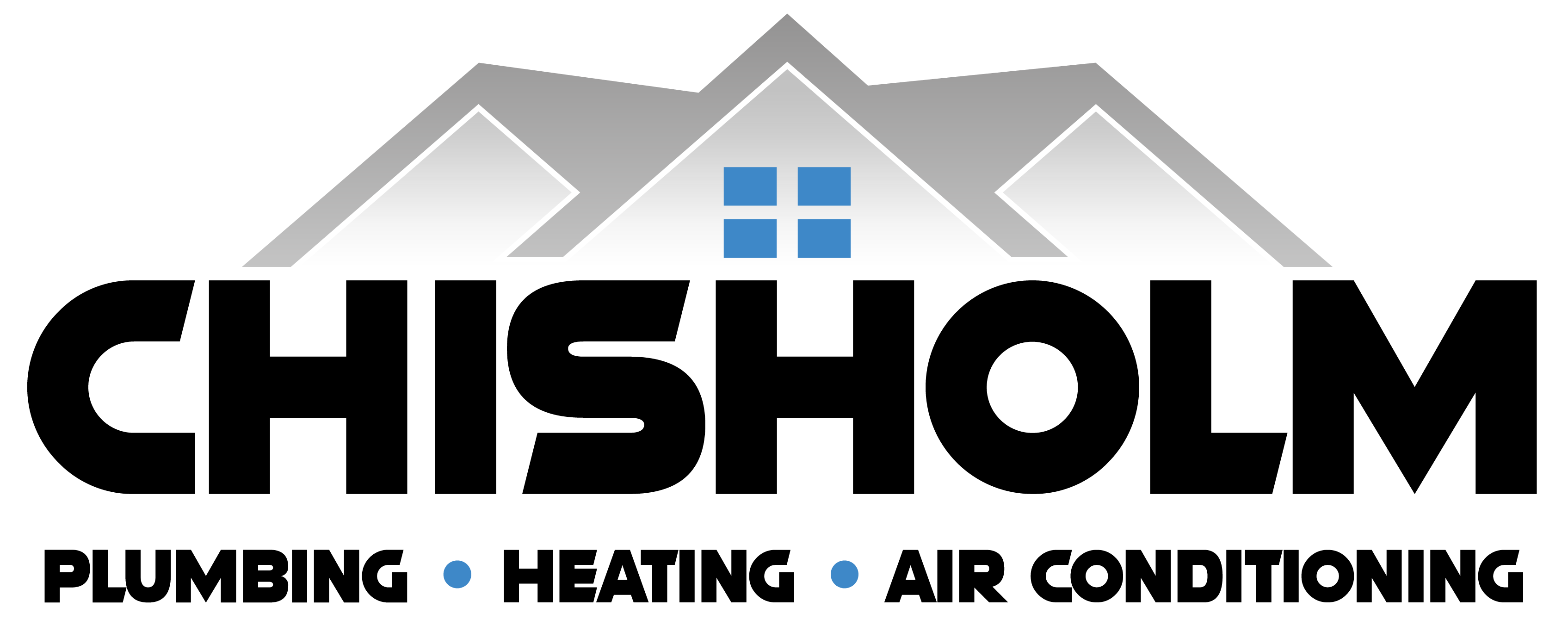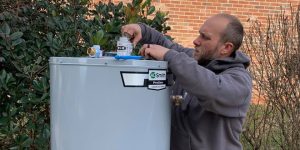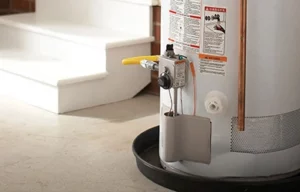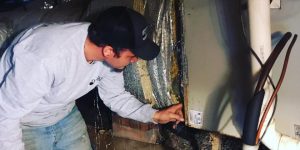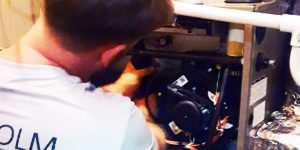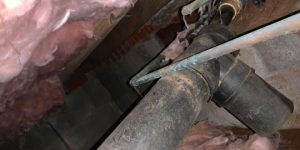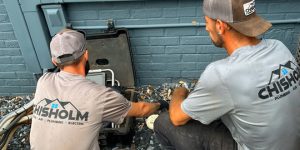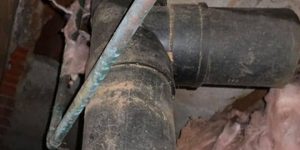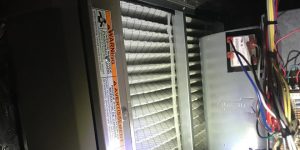
As winter settles in and temperatures drop, many of us spend more time indoors with windows tightly sealed and heating systems running full-time. While staying cozy is a priority, this setup can significantly impact your indoor air quality (IAQ). Pollutants like dust, pet dander, and even mold can accumulate, making the air you breathe less than ideal.
Improving your home’s IAQ isn’t just about comfort—it’s essential for your health, especially during flu season. At Chisholm Plumbing Heating & Air Conditioning, we’re here to help you create a healthier indoor environment. Whether it’s through professional heating maintenance or advanced IAQ solutions, we have the expertise you need.
In this blog, we’ll explore simple yet effective ways to improve your indoor air quality this winter, ensuring you and your family can breathe easy all season long. Ready to take control of your home’s air? Contact us today to learn more about our services!
Understand Common Winter Air Quality Issues
Winter brings unique challenges for indoor air quality. Because homes are sealed tightly to conserve heat, fresh air circulation is limited, and pollutants can accumulate. Common culprits include:
- Dust and Pet Dander: These irritants can build up quickly, especially in homes with active heating systems that recirculate air.
- Dry Air: Low humidity in winter can dry out your nasal passages, making you more susceptible to respiratory issues.
- Mold and Mildew: Moisture from everyday activities like cooking or showering can lead to mold growth in poorly ventilated areas.
- Carbon Monoxide: Faulty heating systems can release dangerous gases, emphasizing the importance of regular heating maintenance.
Understanding these challenges is the first step toward healthier indoor air. If you’re experiencing air quality issues or suspect your heating system may be contributing to the problem, don’t hesitate to schedule a professional heating repair with Chisholm Plumbing Heating & Air Conditioning.
Ventilation Is Key
Good ventilation is the foundation of healthy indoor air, especially during the winter months when homes are sealed tightly to retain heat. While opening windows for fresh air circulation may not be practical, there are effective ways to improve ventilation without sacrificing warmth.
Tips for Better Winter Ventilation:
- Use Exhaust Fans: Run kitchen and bathroom exhaust fans to remove moisture, odors, and pollutants.
- Open Windows Strategically: On milder days, crack a window for a short period to allow fresh air to circulate.
- Upgrade to an Energy Recovery Ventilator (ERV): An ERV system exchanges stale indoor air with fresh outdoor air while maintaining your home’s warmth, making it an excellent addition to your heating system.
Proper ventilation not only improves IAQ but also helps prevent issues like mold and condensation. For expert advice on integrating ventilation solutions with your current heating or air conditioning system, contact our team today!
Use High-Quality Air Filters
Your HVAC system plays a crucial role in maintaining indoor air quality, and the filters you choose make all the difference. High-quality air filters trap dust, allergens, and other pollutants, preventing them from circulating throughout your home.
How to Optimize Your Air Filters:
- Choose the Right Filter: Look for filters with a high MERV (Minimum Efficiency Reporting Value) rating, which indicates better filtration performance.
- Replace Filters Regularly: Dirty filters can restrict airflow and reduce efficiency. Aim to replace them every 1–3 months, especially during peak heating or cooling seasons.
- Consider an Upgrade: HEPA filters or whole-home filtration systems can provide superior air cleaning for homes with allergies or respiratory concerns.
Routine filter maintenance not only improves air quality but also enhances the performance of your heating system or AC unit, reducing energy consumption and preventing breakdowns.
Not sure which filter is best for your system? Let our experts help! Schedule a maintenance appointment with Chisholm Plumbing Heating & Air Conditioning to keep your HVAC system running smoothly.

Invest in a Humidifier
Winter air tends to be dry, and indoor heating systems can make it even worse. This lack of humidity can lead to dry skin, irritated sinuses, and even damage to wood furniture and floors. Adding a humidifier to your home is an effective way to maintain ideal indoor humidity levels and improve air quality.
Benefits of a Humidifier:
- Healthier Air: Balanced humidity helps reduce respiratory irritation and prevents the spread of airborne viruses.
- Enhanced Comfort: Proper humidity keeps your skin and throat from feeling dry or scratchy.
- Protects Your Home: Prevents cracking or warping in wood furniture, floors, and musical instruments.
Aim to maintain indoor humidity levels between 30% and 50% for optimal comfort. Whole-home humidifiers work seamlessly with your existing heating system, ensuring consistent moisture levels throughout your home.
Not sure if a humidifier is right for you? Contact us to explore our heating maintenance and indoor air quality solutions today!
Clean Regularly to Reduce Pollutants
Keeping your home clean is one of the easiest and most effective ways to improve indoor air quality during winter. Dust, pet dander, and other allergens can accumulate quickly, especially when your heating system is running constantly.
Tips for Reducing Indoor Pollutants:
- Dust and Vacuum Frequently: Use a vacuum with a HEPA filter to capture fine particles and allergens.
- Wash Fabrics: Launder curtains, rugs, and bedding regularly to minimize dust and allergens.
- Control Moisture: Wipe down damp surfaces to prevent mold growth, especially in kitchens and bathrooms.
- Schedule Duct Cleaning: Dust and debris can build up in your HVAC ducts, recirculating pollutants into your home. Professional duct cleaning can make a big difference.
At Chisholm Plumbing Heating & Air Conditioning, we offer HVAC maintenance and cleaning services to help keep your system—and your air—fresh and clean. Visit our heating services page to learn more.
Consider Air Purification Systems
For a more comprehensive approach to improving indoor air quality, air purifiers can be a game-changer. These systems work alongside your HVAC setup to remove even the smallest pollutants, ensuring cleaner, healthier air throughout your home.
Types of Air Purification Solutions:
- Portable Air Purifiers: Ideal for single rooms or targeted areas, these devices filter out allergens, dust, and even odors.
- Whole-Home Air Purifiers: Installed within your HVAC system, they provide consistent purification for your entire home.
- UV Light Systems: These advanced systems use ultraviolet light to neutralize bacteria, viruses, and mold spores, adding an extra layer of protection.
Air purifiers are especially beneficial for households with allergies, asthma, or other respiratory concerns. Pairing a purification system with regular heating maintenance ensures your HVAC is functioning at its best while keeping the air you breathe as clean as possible.
Not sure where to start? Our team at Chisholm Plumbing Heating & Air Conditioning can recommend the perfect air purification solution for your home. Contact us today to learn more!
Create a Healthier Home This Winter
Improving indoor air quality during winter doesn’t have to be complicated. By combining better ventilation, regular cleaning, and advanced tools like air purifiers and humidifiers, you can create a healthier, more comfortable living space for you and your family.
At Chisholm Plumbing Heating & Air Conditioning, we’re here to help you every step of the way. From heating maintenance and repairs to IAQ solutions, we’re committed to making your home as safe and cozy as possible this winter.
Check out our website for more information about our heating and AC services, or explore our service areas to see if we’re near you. Ready to breathe easier? Contact us today to schedule your appointment!
